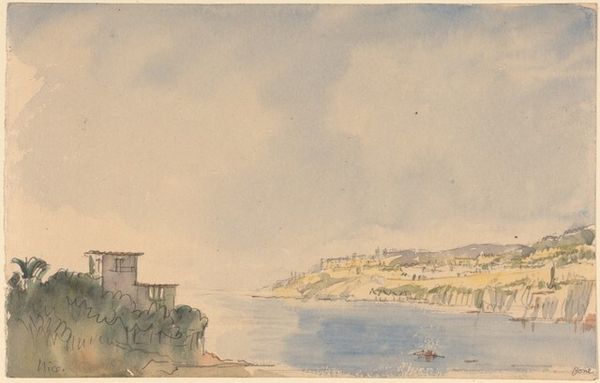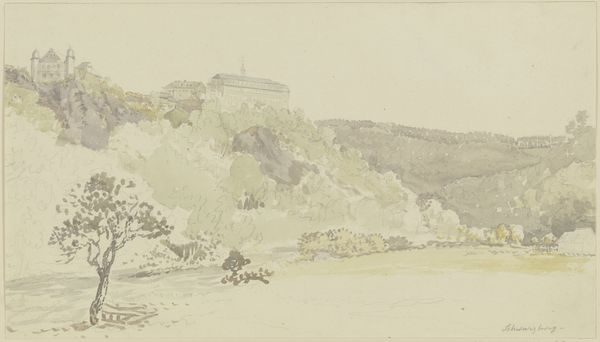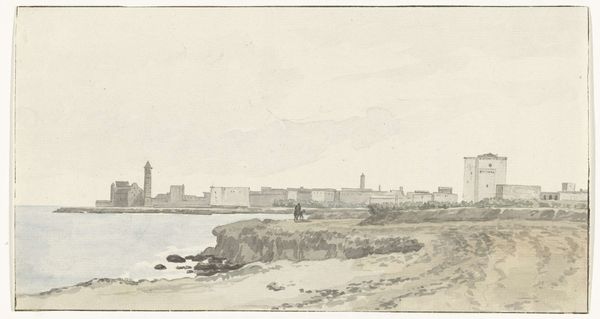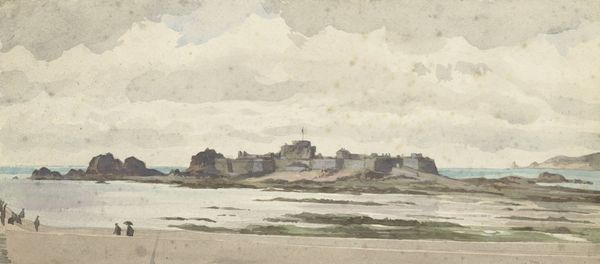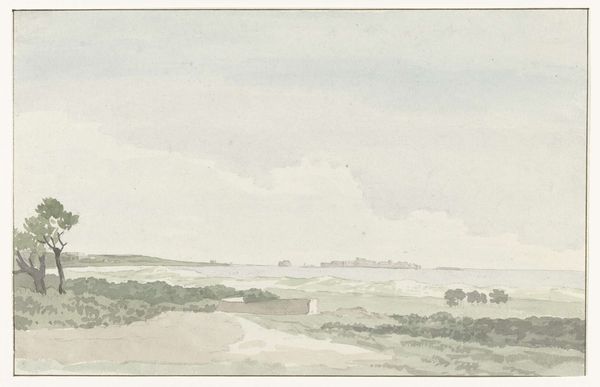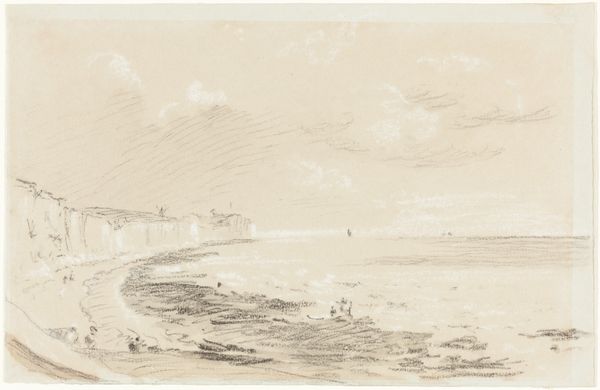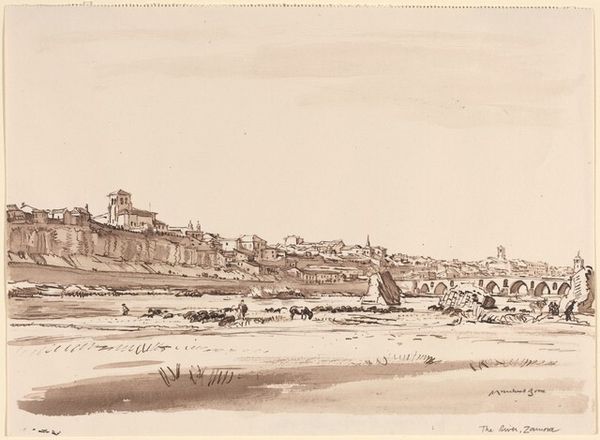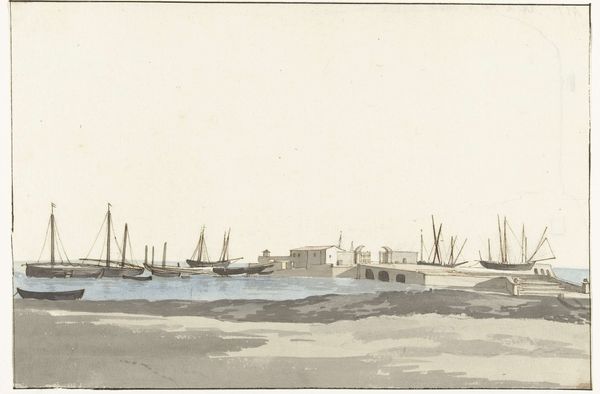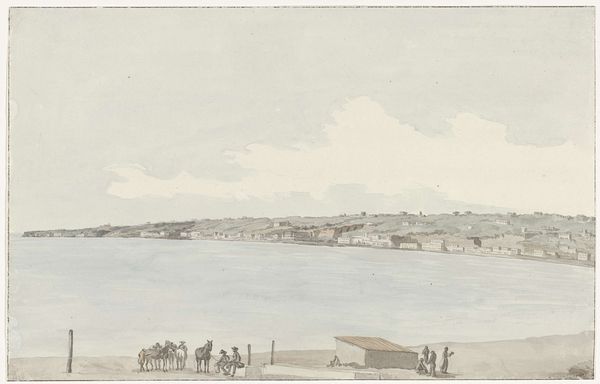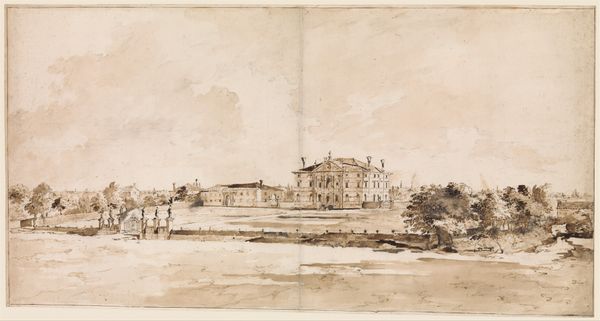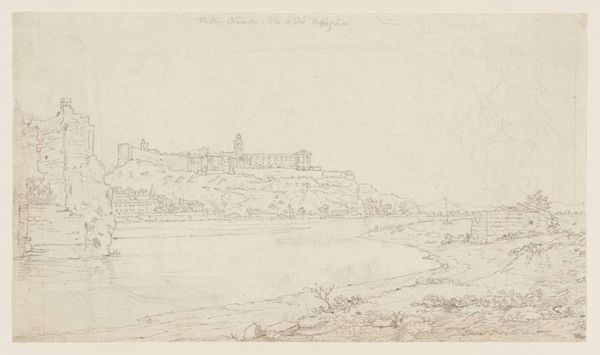
Dimensions: height 210 mm, width 308 mm
Copyright: Rijks Museum: Open Domain
Editor: Here we have Louis Ducros's 1778 watercolor, "View of Barletta on the Coast." It's currently held in the Rijksmuseum. It strikes me as quite dreamlike. There's a haze over the whole scene, a real softness to the light. How do you interpret this work, especially the subdued color palette? Curator: It's as if the artist captured a memory, isn’t it? Ducros, traveling through Italy, wasn't just documenting; he was feeling. Think of watercolor as a visual diary, plein-air as a sensory immersion! He's distilling Barletta – the sun on ancient stone, the smell of salt in the air – down to these washes. Notice how he leads your eye? That rise in the foreground pulls you into the scene, doesn’t it? Like you are discovering the town for yourself. What is it you find "dreamlike?" Editor: I guess it’s the vagueness, the sketch-like quality. It doesn’t feel like a precise rendering of a real place. More of a…mood. Curator: Exactly! It is a feeling, or a fleeting vision of a place, and Ducros, with this work, shows a romantic ideal: of crumbling ruins infused with warmth and nature. That tension there, between decay and vitality – the Romantic obsession. See how it isn’t really about factual buildings; rather a kind of evocative essence. How interesting you grasped that! Editor: That’s fascinating! So it’s less about *what* he painted and more about *how* he painted it? I see the scene much differently now! Curator: Precisely. Now go look closely: notice the delicate precision embedded into this dreamlike world; that gives this work even more nuance, and reminds us about that human connection to place that Louis Ducros expresses.
Comments
No comments
Be the first to comment and join the conversation on the ultimate creative platform.
